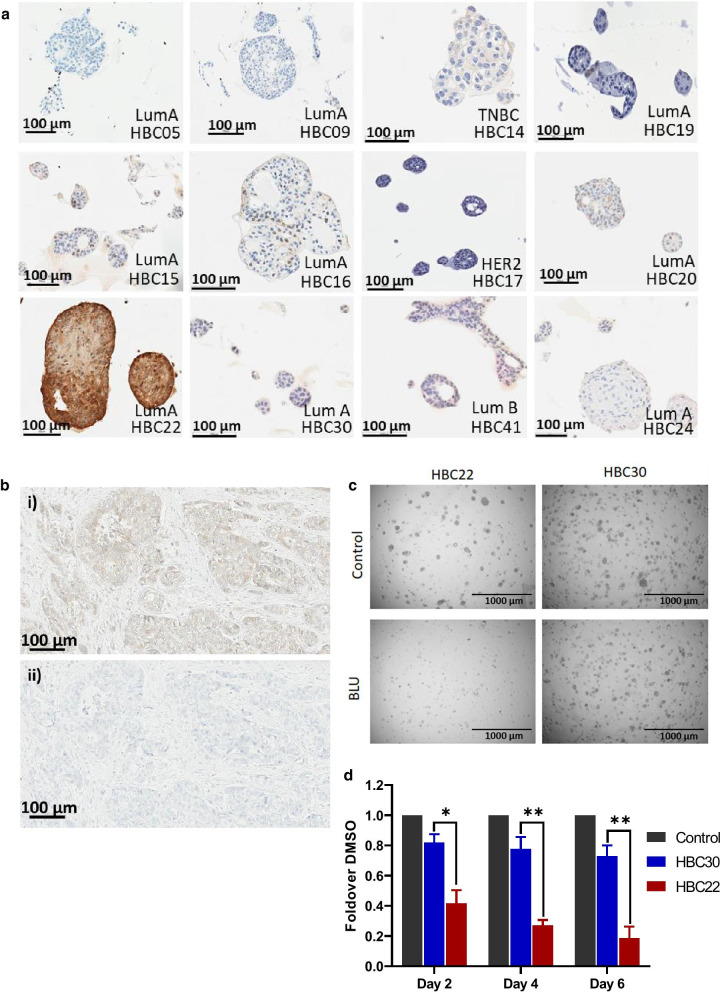Fig. 6.
FGFR4 expression and functional characterization in human breast cancer organoids. a Immunohistochemical staining for FGFR4 across a panel of 9 human breast cancer organoid lines. b Immunohistochemical staining for FGFR4 of the original tumor tissue used to establish the HBC22 organoid line. Panel i) shows staining with the FGFR4 antibody, while ii) is the minus antibody control. c Effect of the FGFR4 inhibitor BLU9931 on organoid growth. Images of DMSO control or BLU9931-treated FGFR4-high HBC22 and FGFR4-low HBC30 organoids at endpoint. d Quantification of (c) comparing the FGFR4-high HBC22 organoid line (red) with the FGFR4-low HBC30 line (blue) normalized to the DMSO control. Statistical significance was determined using an unpaired t test. * indicates p value of < 0.05, ** < 0.01. Error bars: mean ± standard error of three biological replicates, each with three technical replicates

